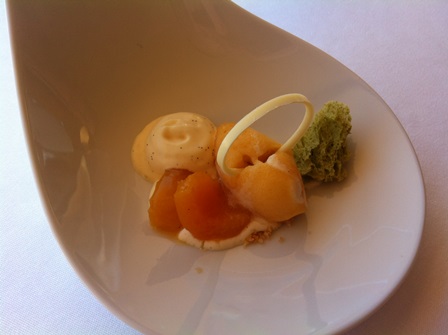Rather like last year’s trip to Alanya in Turkey, the Algarve conjures up visions of post-exam teenagers who do techno and wrinkled sixty-somethings who do too much tanning. And indeed, an unscheduled night in Albufeira (I needed to escape from a “glamping” experience that turned out to be much more camping than glamorous) proved that the stereotypes do exist for a reason.
Portugal’s Algarve: from sardines to stars
Unsurprisingly, fish features on pretty much every Algarve menu: Golden Bream seems popular, generally served simply grilled with vegetables and salad. Some of the best seared tuna I’ve ever eaten came from a harbour-side “tasca” (low-key restaurant) just outside Sagres – Portugal’s most south-westerly tip. But head along the coast towards Portimão and sardines are the sea-fare of choice. By coincidence, a sardine festival was going on the week we were there, so we ordered an entire platter of them from Vô Filipe, and scraped the bones clean while watching the evening’s promenade along the seafront.

Along the same theme, “cataplana” is another Portuguese seafoody speciality: a stew that comes in a round, domed, copper pot (the cataplana itself), which can contain everything from clams and mussels to shrimps and squid, with the frequent addition of pork. The sauce is the key: rich, red and sweet from tomatoes and peppers, and a little salty from the seafood. After an abortive attempt to have our cataplana and eat it at Tasca do Ricky (purveyor of the best cataplana in Faro, according to Trip Advisor – which evidently meant that 14 customers had ordered it two minutes before we walked through the door and they were all out of clams), we headed to Cidade Velha in Faro’s old town. It was good, but we couldn’t avoid the suspicion that Ricky’s would have been better…
Think Portugal and you think piri-piri chicken (which, if you’re British, means Nando’s). And in central Algarve, outdoor-grilled, hot-marinated chicken is every bit as popular as sardines. We got ours in the town of Silves from Churrasqueira Valdemar – a hole-in-the-wall with a dozen or so street-side tables and not much more than an over-sized barbecue for a kitchen. There’s no menu and no pretension: a platter of chicken, chips, various salads, bread and olives set us back just €15 for two. Valdemar came recommended by the owners of nearby guesthouse Duas Quintas – by far the loveliest B&B I think I’ve ever stayed in. Go for Mary’s breakfasts alone, but don’t miss out on an early-morning dip in the pool, surrounded by orange trees and oozing with rural charm.

Back on the south coast, while Albufeira may be best avoided, just west along the beach at Galé you’ll find the Algarve’s two-Michelin-starred Vila Joya: a boutique resort as well as a visiting gastronome’s Mecca (it’s number 37 on the World’s Best Restaurants list, so well worth the pilgrimage). We ordered the lunchtime tasting menu by chef Dieter Koschina, which looked like four courses but of course morphed into ten with all the “surprises” (as the wait staff liked to call the amuses) thrown in along the way. To cover them all would require a separate blog post, but particular highs included the starter of scallops with gooseberry and sweet onion, and the pre-dessert of apricots, white chocolate and vanilla. These dishes imply a classic style of cuisine, but the meal was characterised by various “pearls” (self-contained bursts of flavour that exploded in your mouth) – the chef clearly knew his molecular stuff but he didn’t go overboard, either. For €175 each – including a bottle of Quinta das Marias, produced using Portugal’s indigenous Encruzado grape from the Dão region – Vila Joya was considerably more affordable than other restaurants of lower quality.


But, much as I enjoyed my Michelin-starred lunch, I was equally happy sitting outside pavement cafes gnawing the piri-piri marinade off my chicken bones and squeezing lemon juice over piles of sardines. And that, it seems to me, is what the Algarve is really all about.

